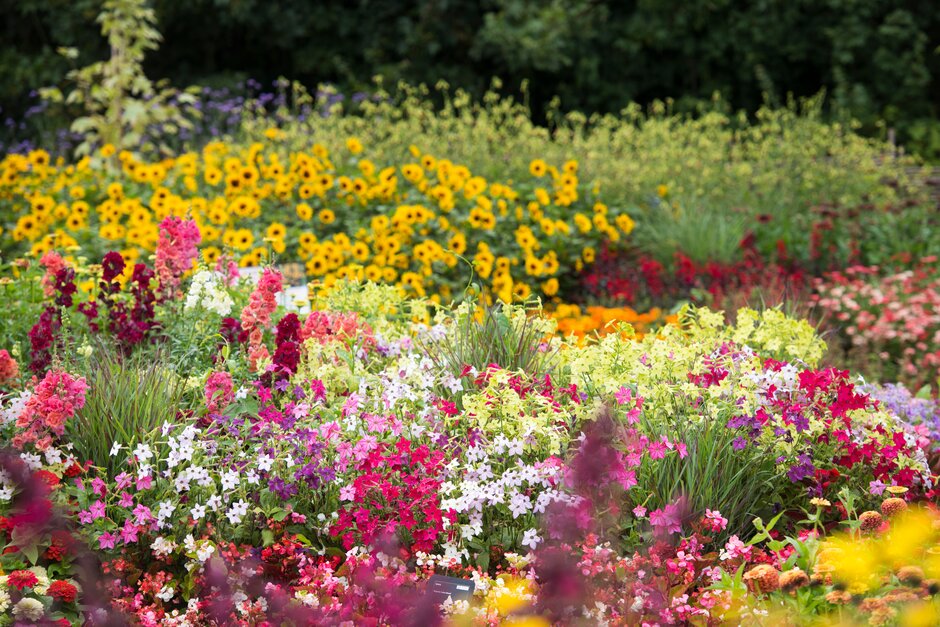Results from the Royal Horticultural Society’s (RHS) Extreme Heat Survey conducted in July after the record-breaking heatwave this summer (2022) show that plants across the country suffered damage.
Over 8,000 responses paint a clear picture that even established, formerly healthy plants could not cope with temperatures well above 30 degrees Celsius. Techniques that would usually protect plants and help them retain water, such as mulching, in some cases also proved ineffective against the prolonged heat and drought according to survey respondents.
The survey asked respondents questions about plants in their gardens that had suffered damage during the heatwave. Responses give the RHS a broad view of the immediate harm of high temperatures to garden plants and how this might be exacerbated as the climate continues to warm and extreme weather becomes increasingly frequent.
The top ten plant types reported to have suffered damage were: Hydrangea; Acer; Fuchsia; Astilbe; Rosa; Amenome; Ferns; Heuchera; Phlox; Crocosmia
Many of the plants in the top ten were expected, such as hydrangeas, Japanese maples (acers) and hardy fuchsia species, as they prefer cooler conditions with plenty of soil moisture. In addition these varieties are often planted in dry and exposed sites and this may have contributed to their vulnerability.
However, others such as roses were more of a surprise. Some saw flower damage in July and August but many have gone on to have an extended flowering season and are still producing flowers in late October.
Fans of the fiery-coloured crocosmia will be reassured that the damage to these plants is unlikely to affect them in the long-term. Although their leaves are easily scorched, the damage is expected to be superficial as they are drought-tolerant plants and are likely to re-emerge.
Magnolia, rhododendron and camellia do not appear in the top ten, despite drought resulting in leaf loss, dieback and often death. Having already finished flowering by the summer, damage might have been less obvious. The RHS Garden Advice Service will be on the lookout for reports of damaged plants in the spring when these plants should be ready to bloom.
If we see similar temperatures next summer gardeners should resist the urge to prune plants that have lost a lot of leaves. Most plants will still have live buds on their stems and branches, and will leaf up again when the temperature is right and rain arrives, but pruning after heat and drought can put them under more stress. Come spring, woody plants will show where any dead wood is more clearly, ensuring you can prune the right parts of plants affected by the heat this summer.
Leigh Hunt, RHS Principal Horticultural Advisor, advises: “As temperatures become more extreme don’t replace like for like – if a plant is struggling in your garden you can plant something better suited to the space. Dry gardens don’t have to mean gravel-gardens, you can keep an English-style garden by swapping plants, for example exchange rhododendrons for grevillea.
“Timing is especially important in the garden, and gardening calendars aren’t as reliable as your own green fingers as seasons become more variable. You can make good use of the longer seasons as many plants including asters and salvias are now providing a brilliant show well into November.”
The results highlight the importance of planting in the right place at the right time and being water-wise all year round. Climate-resilient planting can help gardens cope with extremes of temperatures and moisture, as well as ensuring habitats and food for wildlife throughout the year.
While mulching alone does not seem to have protected some plants from such high temperatures, a combination of measures such as improving soil with home compost to ensure it holds more water and harvesting rainwater with water butts to keep plants that require it moist could help.
More information can be found at www.mains2rains.uk
ENDS
Picture cpatoin: Bedding display RHS Hyde Hall credit: RHS/Joanna Kossak


